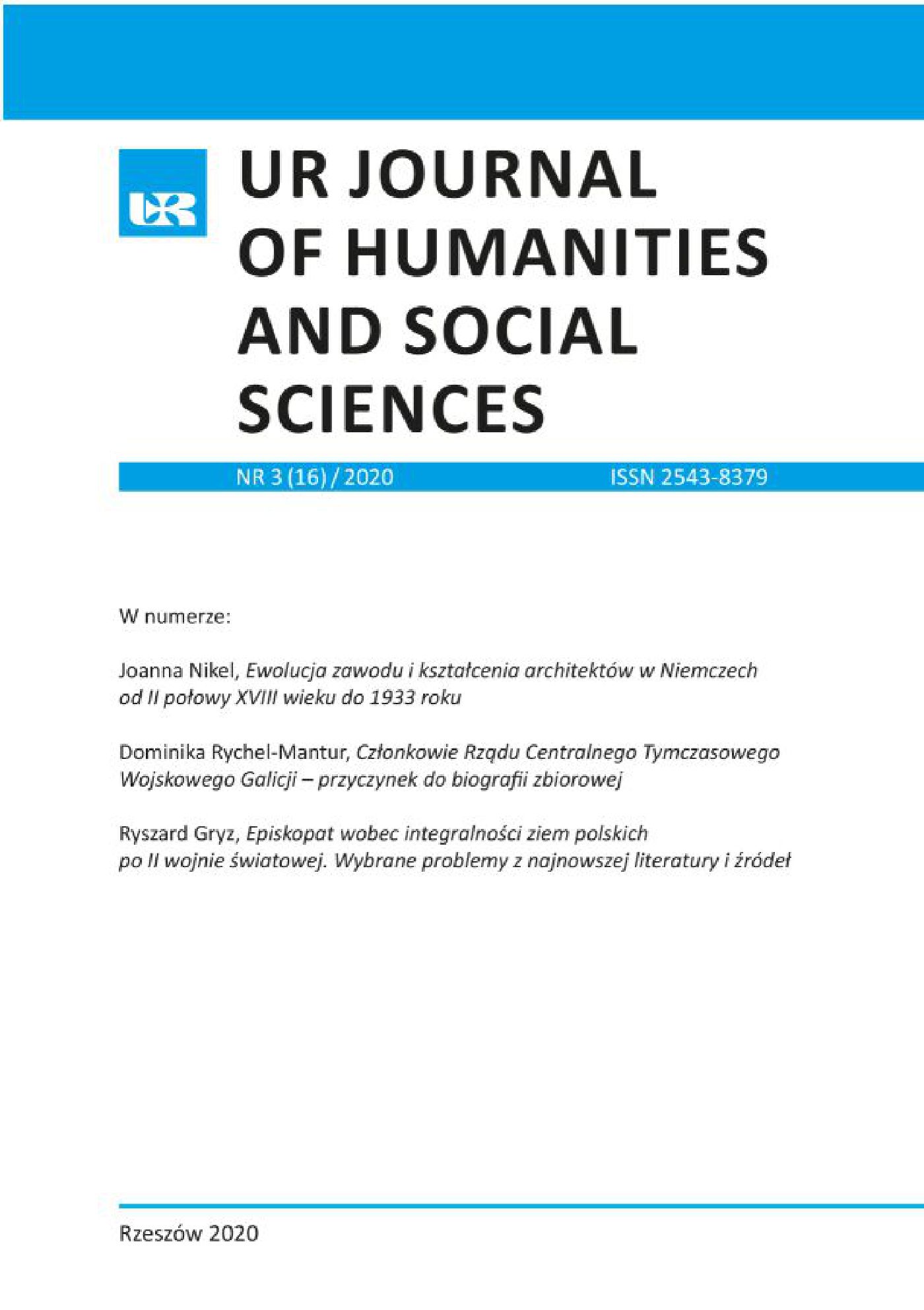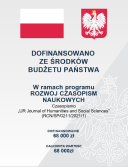Episkopat wobec integralności ziem polskich po II wojnie światowej. Wybrane problemy z najnowszej literatury i źródeł
DOI:
https://doi.org/10.15584/johass.2020.3.6Słowa kluczowe:
Episkopat Polski, Ziemie Zachodnie i Północne, Kresy Wschodnie, administracja kościelna, relacje państwo–Kościół, Polska Rzeczpospolita Ludowa, Stolica ApostolskaAbstrakt
W artykule przedstawiono wyselekcjonowane kwestie dotyczące zaangażowania prymasów Polski kardynała Augusta Hlonda i kardynała Stefana Wyszyńskiego oraz innych biskupów w sprawę powstania i stabilizacji polskiej administracji kościelnej na Ziemiach Zachodnich i Północnych po II wojnie światowej. Uwzględniono najważniejsze etapy w chronologii wydarzeń związanych z tą problematyką (1945 – 1951 – 1956 – 1972). Najistotniejsze okazały się decyzje podjęte w sierpniu 1945 r., kiedy utworzono pięć administratur apostolskich dla diecezji warmińskiej z siedzibą w Olsztynie, gdańskiej oraz w Gorzowie Wielkopolskim, Opolu dla Śląska Opolskiego i Wrocławiu dla Dolnego Śląska. W czerwcu 1972 r., po ratyfikacji przez Bundestag układu granicznego zawartego między Polską Rzeczpospolitą Ludową a Republiką Federalną Niemiec, zakończył się okres tymczasowości polskich struktur kościelnych na tzw. Ziemiach Odzyskanych. Papież Paweł VI w bulli Episcoporum Poloniae coetus zlikwidował administratury apostolskie i utworzył cztery nowe diecezje (gorzowską, koszalińsko-kołobrzeską, szczecińsko-kamieńską i opolską). W procesie stabilizacji polskich struktur kościelnych, który trwał dwadzieścia siedem lat, decydujące było stanowisko kolejnych papieży i Stolicy Apostolskiej. Uwzględniali oni poglądy niemieckiego i polskiego episkopatu oraz stan relacji polsko-niemieckich w kwestii aprobaty linii granicznej. Wśród polskich hierarchów najaktywniejszy okazał się biskup Bolesław Kominek (administrator apostolski w Opolu, arcybiskup wrocławski i kardynał). W artykule podstawę syntetycznej narracji stanowi wybór polskojęzycznych, najnowszych publikacji na temat relacji państwowokościelnych w Polsce po II wojnie światowej oraz edycje źródłowe. Wykorzystano między innymi osobiste notatki prymasa Wyszyńskiego Pro memoria, listy pasterskie Episkopatu Polski, komunikaty Konferencji Episkopatu Polski oraz oficjalne wypowiedzi biskupów.Downloads
Download data is not yet available.
Pobrania
Opublikowane
2020-09-30
Jak cytować
Gryz, R. (2020). Episkopat wobec integralności ziem polskich
po II wojnie światowej. Wybrane problemy
z najnowszej literatury i źródeł. UR Journal of Humanities and Social Sciences, 16(3), 100–122. https://doi.org/10.15584/johass.2020.3.6
Numer
Dział
Artykuły
Licencja
Prawa autorskie (c) 2020 Wydawnictwo Uniwersytetu Rzeszowskiego

Utwór dostępny jest na licencji Creative Commons Uznanie autorstwa – Użycie niekomercyjne 4.0 Międzynarodowe.



